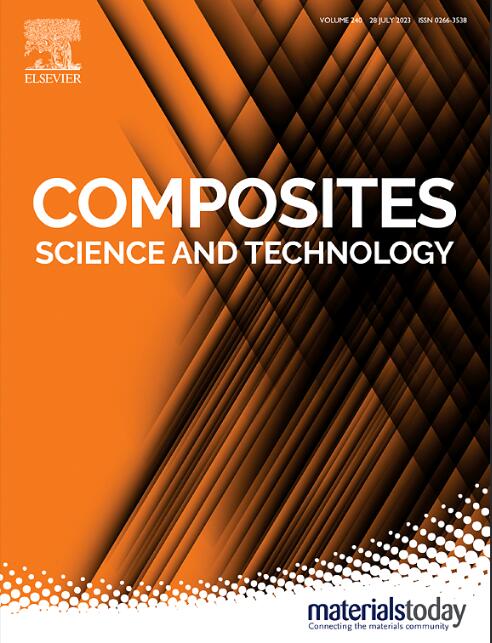大面积增材制造聚合物及聚合物复合材料的头内和头间断裂分析
IF 8.3
1区 材料科学
Q1 MATERIALS SCIENCE, COMPOSITES
引用次数: 0
摘要
大面积增材制造(LAAM)在制造米级聚合物复合材料结构件方面的应用越来越多,特别是在工装和夹具方面。不幸的是,LAAM在印刷复合材料中引入了制造引起的缺陷,例如,使用传统制造方法时不会出现的头内微孔和头间粘合不良,导致机械性能和断裂性能下降。本文通过对纯丙烯腈-丁二烯-苯乙烯(ABS)和短碳纤维增强ABS (CF/ABS)的能量释放率GIc和断裂机理进行了比较分析。针对单头、双头和多头配置的双悬臂梁(DCB-D)测试,采用刚性加倍器来减少裂纹尖端的压缩破坏,从而可以测量裂纹扩展。对于这些配置,导出了一种新的数据约简方法,以消除GIc计算中的倍频效应,产生“纯”的头内和头间GIc值。结果表明,CF/ABS在头内水平上比ABS具有更高的损伤容忍度,但在头间水平上比ABS具有更低的损伤容忍度。ABS中塑料韧带的发展有助于消散额外的应变能,提高整体能量释放率。本研究开发的实验断裂测试方法有望为其损伤容限能力提供机理洞察,加快laam生产的聚合物和聚合物复合材料的鉴定过程。本文章由计算机程序翻译,如有差异,请以英文原文为准。

Intrabead and interbead fracture analysis of large area additive manufactured polymer and polymer composites
Large-Area Additive Manufacturing (LAAM) has seen increased application in manufacturing meter-scale, polymeric composite structural parts, especially for tooling and fixturing. Unfortunately, LAAM introduces manufacturing-induced defects in printed composites, e.g., intrabead microvoids and poor interbead adhesion that are not otherwise seen when traditional manufacturing methods are used, causing degradation of mechanical and fracture properties. In this paper, the fracture behavior of neat acrylonitrile butadiene styrene (ABS) and short carbon fiber-reinforced ABS (CF/ABS) fabricated by LAAM is compared and analyzed by evaluating their energy release rate and fracture mechanisms. A double cantilever beam with doublers (DCB-D) test for single-bead, double-bead, and multiple-bead configurations is developed by incorporating rigid doublers to reduce the compressive failure at the crack tip, allowing for the measurement of crack propagation. A new data reduction method for these configurations is derived to remove the doubler effect from the calculation, producing ‘pure’ intrabead and interbead values. We show that CF/ABS is more damage tolerant than ABS at the intrabead level, but less damage tolerant than ABS at the interbead level. The development of plastic ligaments in ABS helps dissipate additional strain energy, improving the overall energy release rate. The experimental fracture test approach developed here is expected to provide mechanistic insight into their damage tolerance capability, accelerating the qualification process of LAAM-produced polymer and polymer composites.
求助全文
通过发布文献求助,成功后即可免费获取论文全文。
去求助
来源期刊

Composites Science and Technology
工程技术-材料科学:复合
CiteScore
16.20
自引率
9.90%
发文量
611
审稿时长
33 days
期刊介绍:
Composites Science and Technology publishes refereed original articles on the fundamental and applied science of engineering composites. The focus of this journal is on polymeric matrix composites with reinforcements/fillers ranging from nano- to macro-scale. CSTE encourages manuscripts reporting unique, innovative contributions to the physics, chemistry, materials science and applied mechanics aspects of advanced composites.
Besides traditional fiber reinforced composites, novel composites with significant potential for engineering applications are encouraged.
 求助内容:
求助内容: 应助结果提醒方式:
应助结果提醒方式:


